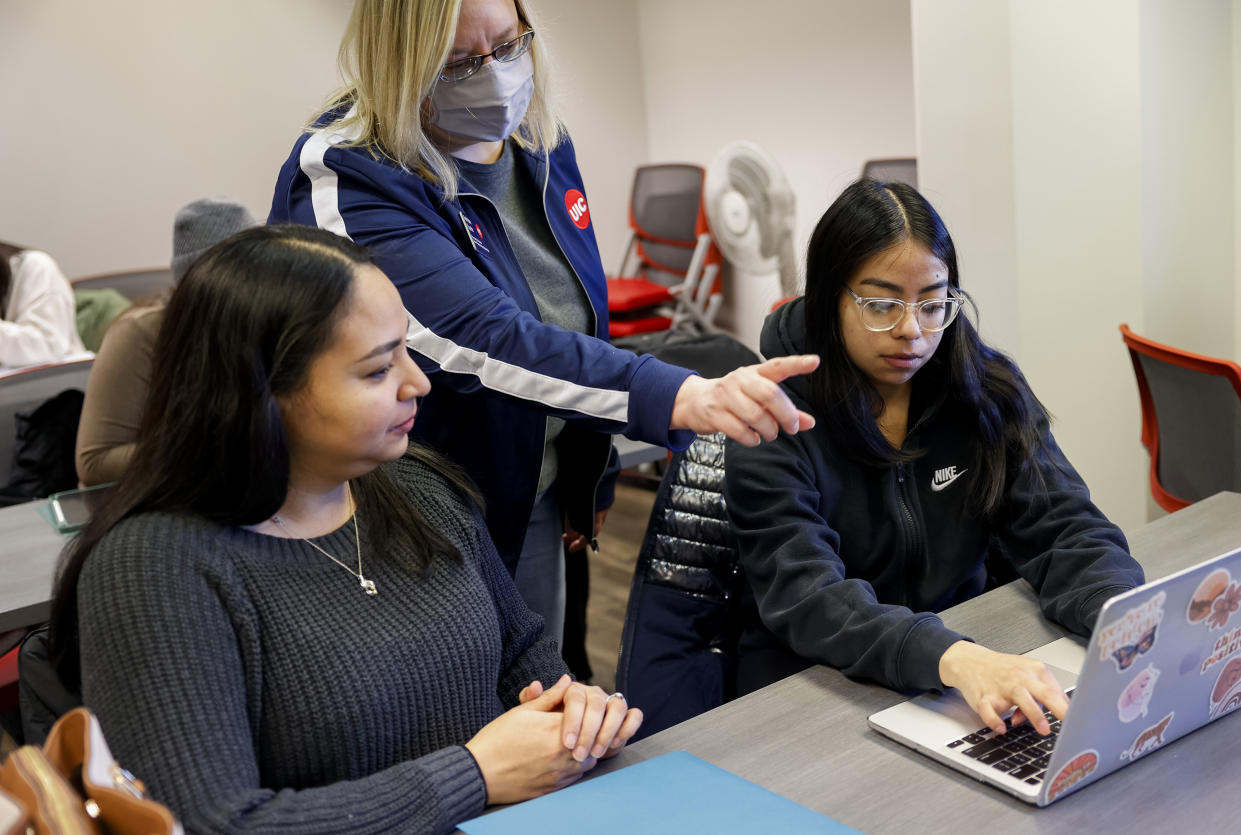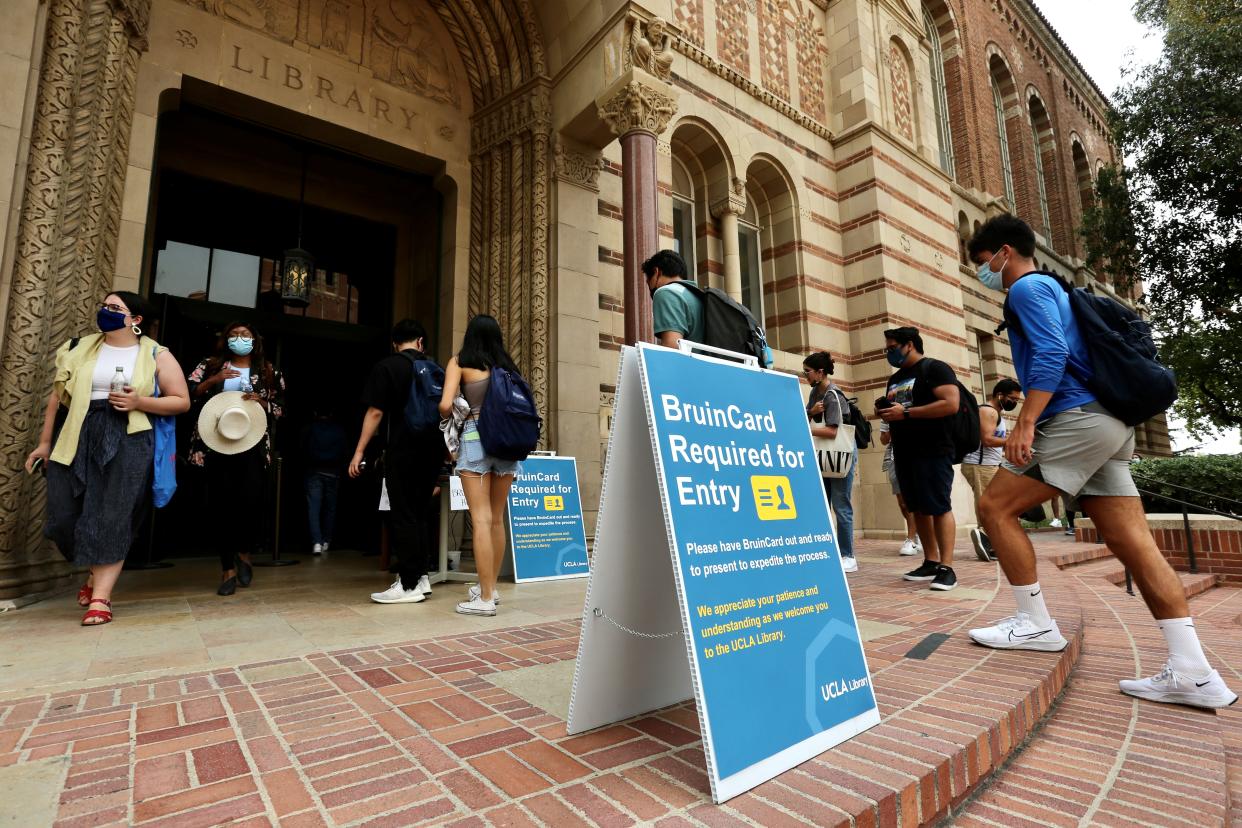With FAFSA submissions way down, education officials encourage more students to apply for aid
At the time of year when many students make their final college decisions, federal education officials are trying to get more families to apply for federal financial aid — a task typically tackled much earlier in the year.
But this year has been anything but normal regarding the FAFSA, which has been bogged down by problems since it was overhauled. The Education Department said this week it has resolved issues with millions of forms and is encouraging more families to fill out the form.
In addition, the department is rolling out a streamlined process for submitting the Free Application for Federal Student Aid or FAFSA for applicants or their parents who don’t have a Social Security number. That comes a month after the Education Department resolved a glitch that barred mixed-status applicants from completing the FAFSA.
“Now parents and contributors will enter their tax information manually, allowing the student to submit their FAFSA,” Under Secretary of Education James Kvaal told reporters Tuesday. “They will still be expected to begin the identification process, but they will no longer have to wait to complete it.”
But the headline message from education officials in the waning days of college decision season: Students who have yet to submit a FAFSA should do so immediately, allowing schools to package and send aid offers to new and returning students who are considering college this fall.
“Any students who have been waiting to fill out a FAFSA need to know that now is the time to fill it out,” said Kvaal.
Read more: How to apply for federal student loans
'A challenging year for the FAFSA'
Education officials noted that the FAFSA has been available 24 hours a day, seven days a week since Jan. 8. The department has also processed more than 8.3 million applications to date and made nearly 1 million corrections addressing the most common issues.
The department also emails applicants weekly who still need to make corrections or have started but not completed their forms.
In an effort to drive awareness and boost FAFSA completion rates across the country, the department is targeting states with the largest share of FAFSA submission gaps among high school seniors. First up are Arizona, California, Nevada, and Texas.
Though these are strides in the right direction, this year’s FAFSA has been plagued by problems.
"It’s been a challenging year for the FAFSA, but I’m proud of the progress we’ve made in recent weeks,” Kvaal said.
To start, the “soft launch” of the 2024-25 FAFSA had a $1.8 billion error in its inflation adjustment. In other words: The calculations for how much federal aid a student should get were wrong.

The mistake would have caused some students and families to appear to have more income than they did, resulting in a smaller financial aid award than they deserved and fewer opportunities for state and school-based aid.
When the error was reported in January, more than3.1 million applications had been submitted.
Now, as college decisions loom closer, the department said it has completed reprocessing FAFSA forms impacted by these problems and has transmitted the Institutional Student Information Records (ISIRS) for more than 8.3 million FAFSA forms to schools, states, and scholarship organizations.
“We are pleased to see the Department make forward progress on its timeline to provide accurate FAFSA information to colleges and universities, so they can complete the work of packaging and delivering aid offers to students,” said NASFAA president and CEO Justin Draeger.
Read more: Student loan issues? Here's how to file a complaint with the Department of Education.
For many undocumented families, the damage is done
For students from families with mixed immigration statuses, a new process would temporarily allow them to immediately access and complete the FAFSA and create a StudentAid.gov account.
These students were blocked from completing the form for months due to a technical glitch that wouldn’t allow applicants to complete the form without entering SSN information. Some applicants couldn’t even create a StudentAid.gov account to authenticate their identity and begin their FAFSA application process.
Education officials made a series of corrections last month, allowing student applicants or their parents without SSNs to use the online application, with two requirements.
According to the National College Attainment Network (NCAN), the applicants must enter exact personal identifiable information for their FAFSA to be submitted successfully. The second difference is that because the system cannot retrieve IRS data for applicants without a SSN, tax information must be entered manually — a task that can be frustrating.
“Unfortunately, for many families, the damage may have already been done, and the proposed solution still does not fully offer mixed-status families the full benefits of the simplified form,” said Draeger. “Even so, efforts to reach current and prospective students who have yet to complete the FAFSA must continue.”
Colleges extend decision deadlines

Across the country, millions of students look forward to National Candidate Reply Commitment Day — decision day — which typically falls on May 1.
During a normal year, students who complete the FAFSA form on time receive their federal student aid package around March from the colleges where they applied so they can weigh their options and determine what’s affordable.
This year, FAFSA delays have in turn caused colleges and universities to be delayed in coming up with financial aid packages.
That’s pushed a growing number of schools to extend their commitment days, according to the National Association for College Admission Counseling.
For instance, at the City University of New York, or CUNY, the deadline to commit has been extended to June 1 for applicants who hadn’t received federal financial aid data until April.
Over a third of undergraduate students at CUNY come from households that earn less than $20,000 annually, meaning that many rely on financial aid to attend college. During the 2022-23 academic year, 77% of the student body received some form of federal need-based aid.
“For millions of young adults wrestling over where to attend college, access to financial aid is often the deciding factor,” said CUNY chancellor Félix V. Matos Rodríguez. “By pushing back commitment day, we’re able to provide students and families the flexibility to make an informed decision.”
Gabriella Cruz-Martinez is a personal finance and housing reporter at Yahoo Finance. Follow her on X @__gabriellacruz.
